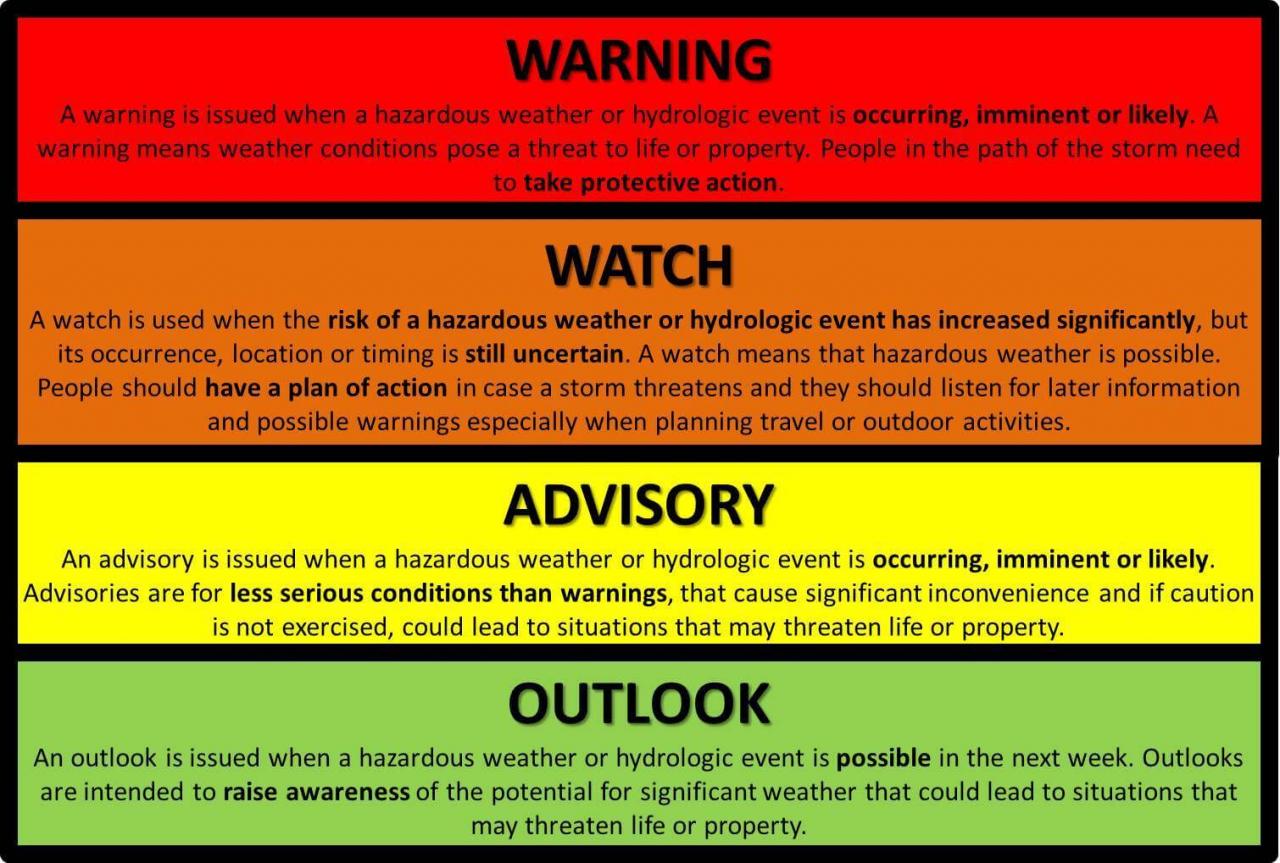
Is a watch or warning worse – As the debate over the severity and implications of watches and warnings takes center stage, this article delves into the intricacies of these alerts, providing a comprehensive overview of their significance, timing, communication, and public perception.
Staying informed about impending storms is crucial. The OGE system watch provides timely updates on potential threats, so you can prepare accordingly. Understanding the difference between a watch and a warning ( is watch or warning worse ) is essential for knowing when to take action.
Watches and warnings serve as crucial tools for disaster preparedness, but understanding their differences is paramount for effective response and mitigation.
If you’re eager to witness the highly anticipated film, how to watch oppenheimer is a question you’ll want to explore. Various streaming platforms and theaters offer options to enjoy this captivating cinematic experience.
Severity Comparison
Severity levels of a watch and a warning are distinct, with significant implications and consequences:
- Watch:Indicates a potential threat, prompting monitoring and preparedness. Consequences may include inconvenience or minor disruptions.
- Warning:Signals an imminent threat, requiring immediate action to protect life and property. Consequences can be severe, including injuries, fatalities, and extensive damage.
Factors determining severity include the nature of the hazard, its intensity, and the likelihood of occurrence.
Timing and Response: Is A Watch Or Warning Worse

Timing and response protocols for a watch and a warning differ significantly:
- Watch:Issued when a threat is anticipated, providing lead time for preparation. Response typically involves monitoring the situation and taking precautionary measures.
- Warning:Issued when a threat is imminent or already occurring. Response requires immediate action to seek shelter, evacuate, or implement other safety measures.
Timely responses to warnings can save lives and reduce damage. Examples include evacuations before floods or taking cover during tornadoes.
Communication and Outreach
Clear and effective communication of watches and warnings is crucial for public understanding and response:
- Methods:Alerts are disseminated through various channels, including media, government websites, and mobile apps.
- Importance:Accurate and timely information enables individuals and organizations to make informed decisions and take appropriate actions.
- Role of technology:Social media and mobile apps play a significant role in disseminating information rapidly and widely.
Public Perception and Response
Public perception and response to watches and warnings can vary:
- Factors influencing trust:Past experiences, media coverage, and the credibility of issuing authorities affect public trust in alerts.
- Improving awareness:Education campaigns and public outreach programs enhance understanding and encourage appropriate responses.
Historical Examples and Case Studies

Historical examples illustrate the impact of watches and warnings:
- Hurricane Katrina:A failure to issue timely warnings led to widespread devastation and loss of life.
- 2011 Japan Earthquake:Early warnings enabled people to evacuate before the tsunami struck, saving thousands of lives.
Case studies provide valuable lessons for improving practices and enhancing public safety.
Wrap-Up
Ultimately, the effectiveness of watches and warnings lies in their ability to trigger timely and appropriate actions, fostering public awareness and preparedness. By understanding the nuances of these alerts, individuals and organizations can navigate emergencies with greater confidence and resilience.
For sports enthusiasts, the Lakers game watch offers an immersive experience. Catching up on the latest games is a great way to stay connected with your favorite team. However, it’s important to note that is watch or warning worse when it comes to severe weather.
Always prioritize safety first.
Detailed FAQs
What is the key difference between a watch and a warning?
A watch indicates a potential threat, while a warning signifies an imminent or ongoing hazard that requires immediate action.
How does timing affect the response to watches and warnings?
Timely watches and warnings provide ample time for preparation and evacuation, reducing the risk of damage and loss of life.
What are the challenges in communicating watches and warnings effectively?
Clear and concise communication is crucial to ensure public understanding and appropriate response. Social media and technology play a vital role in disseminating information.
How can public trust in watches and warnings be improved?
Transparency, accuracy, and timely dissemination of information foster public confidence in these alerts.





